We have two species of hornworms that feed on tomato foliage (occasionally the fruit) in New Hampshire. The most common by far is the tobacco hornworm, Manduca sexta. Much less frequently encountered is the tomato hornworm, Manduca quinquemaculata. Growers in Coos County and northern Grafton and Carroll counties have relatively few problems with these pests, compared to growers in southern New Hampshire.
The scientific names give a clue how to tell the huge hummingbird-sized moths apart. The tobacco hornworm has six pairs of orange spots down the sides of its abdomen, while the tomato hornworm has five pairs. In New Hampshire the adults usually appear in July or August. They fly at night, and females locate tomato plants by odor, and lay their eggs singly on the leaves.
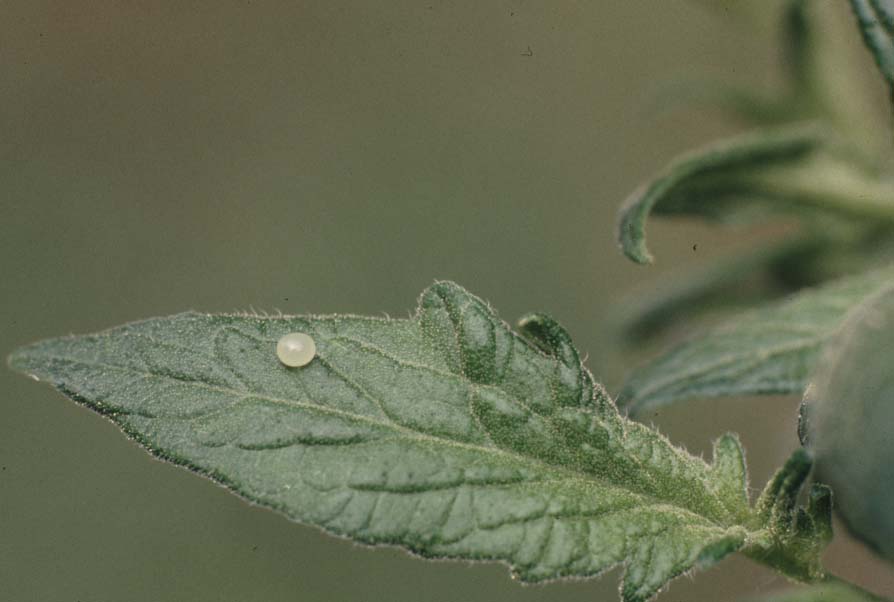
Eggs are about 2mm long, and are about the same green color as tomato leaves. After several days, the eggs hatch into tiny caterpillars, each with a very long “horn” at the rear end. The caterpillars begin feeding on leaves. At first, they make small holes in the leaves, but as they get larger, they end up eating the entire leaves, leaving behind the main mid-rib. When they have fully grown, they can be over three inches long. The two species are easy to tell apart in the caterpillar stage. Tobacco hornworm has diagonal white markings on its side, and the older caterpillars often develop red color on the “horn”. The tomato hornworm has v-shaped white markings on the sides, and the horn on older larvae is often blue-ish.
When fully grown, the larva drops off the plant and burrows into loose soil, where it pupates. Pupae of hornworm moths (the family is called sphinx moths) are large and brown. The long mouthparts project like the handle of an acient Greek amphora. The pupae of neither species can survive New Hampshire winters (where the soil freezes). Therefor, this species formerly was not found here until late June or July each year, when the first adults flew to New Hampshire from farther south. Today, occasionally we find a tomato greenhouse where the soil did not freeze over winter, and the insects were not well controlled. That combination occasionally produces New Hampshire adults in June. But that does not change the general pattern that we rarely find eggs before July.
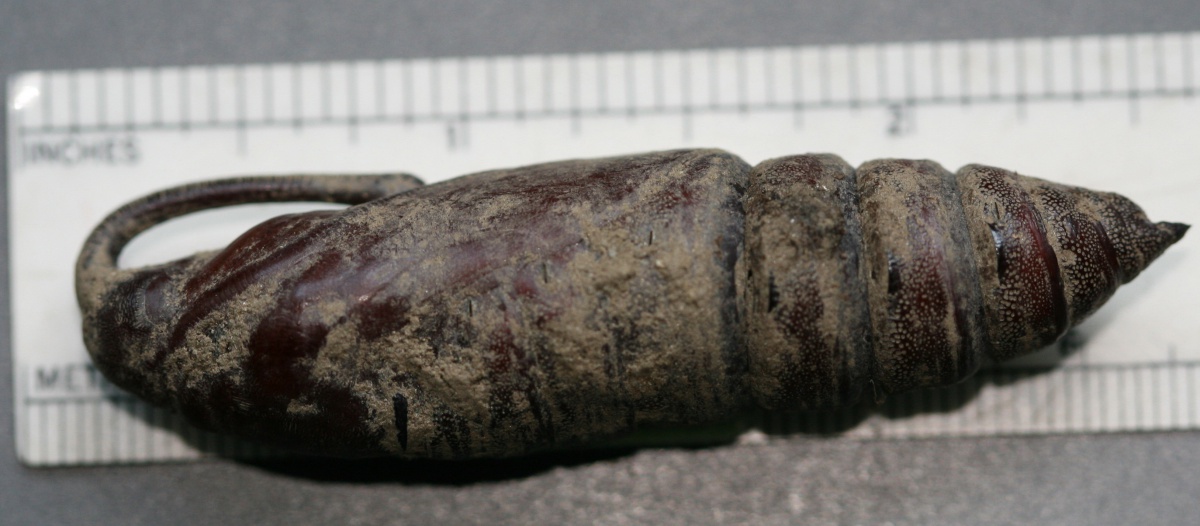
Larvae of both hornworms are heavily parasitized by Apanteles wasps, but the parasites are very slow to kill the caterpillars. The tiny wasps locate a caterpillar and lay eggs inside its body. The eggs hatch into tiny maggot-like larvae that live inside the caterpillar. At first they feed on non-vital parts, like the caterpillar’s fat reserves. But eventually their combined feeding kills the caterpillar. It is common to find hornworm larvae that have many white cocoons of Apanteles wasps on them. This is near the end of the parasitization process. From inside each cocoon, one tiny wasp emerges.
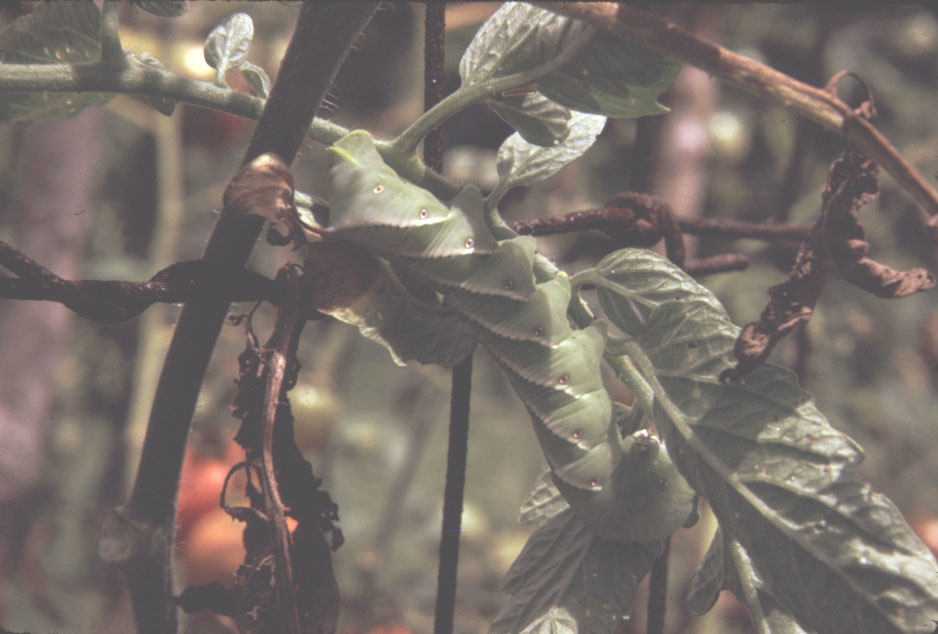
Gardeners regularly ask about killing the parasitized caterpillars. My policy is to kill or throw out any hornworm larvae I find on my tomato plants. If they have lots of wasp cocoons on them, I toss them far away, hoping at least some of the wasps will survive, but the caterpillar will have no more chance to eat my tomato foliage. If I see no cocoons on the larvae, I squash them.
Small caterpillars eat relatively little leaf area, but the older ones consume huge quantities of foliage, and sometimes damage the fruit. To me, the best plan for controlling the larvae is to watch for the first tiny larvae, starting in early July. When I start seeing them, I treat my tomato plants with a biological insecticide containing spores and protein crystals of a bacterium named Bacillus thuringiensis. There are insecticides with this killing agent that are approved for organic gardeners. They kill only caterpillars, and only when the caterpillars EAT the sprayed leaves. Treating tomato plants with an insecticide (aimed at controlling hornworms) earlier than July is wasteful, so I don’t bother. In some years there are so few larvae, I don’t have to treat at all. Some growers prefer to hand pick the larvae. Be my guest. But you will find that their counter-shading makes them very hard to find, so you will spend a long time and still miss many of them. The larvae that you miss continue to eat the foliage. To me, spraying a B.t. product is much less work, and more effective. One clue to the presence of a caterpillar is the damp frass pellets on the ground. When fresh, the pellets are moist & dark. Little caterpillars create little pellets. BIG ones create BIG pellets.

There are plenty of chemical pesticides available to kill the caterpillars. There are so many, I won’t bother to list them. The pesticide label will indicate whether or not the product controls hornworms. This species is easier to kill with pesticides when the larvae are small, and harder to kill when the larvae are large.
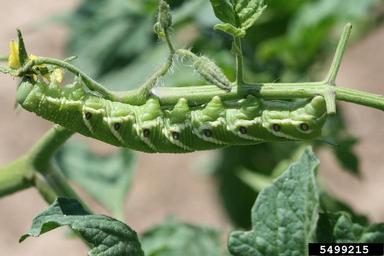
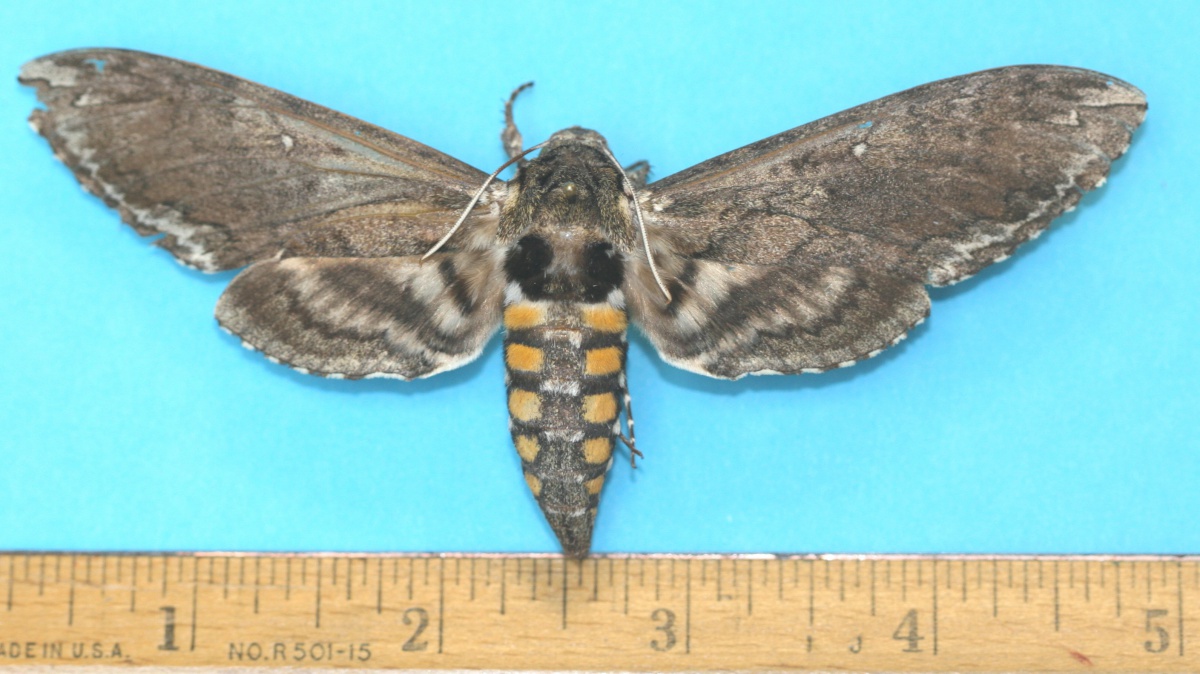
Acknowledgements
All photos are by Alan Eaton, except the tomato hornworm photo, taken by Whitney Cranshaw, Colorado State University, and accessed through www.bugwood.org Thank you to Jeremy DeLisle for reviewing the manuscript. Suzanne Hebert did the layout and posting to the web. Partial support for this publication came from an IPM implementation grant from the National Institute for Food and Agriculture.
Download the Resource for the complete fact sheet and a printable version.

